Review for Red Dwarf: Complete Series 1 (2 Discs)
Introduction
It’s been a fair few years, but the debut of Red Dwarf X on our TV screens, with the promise of more has got me enthused in my favourite space sci-fi sitcom featuring a space-bum, hologram, android and evolved-cat. I eagerly dove into my DVD collection to re-experience the adventures of the Red Dwarf crew, only to find that I had never actually got around to buying the thing. My best friend had it on video, and I was forever having a lend. I almost bought it when they Lucas-ed the show with new effects, but then I actually watched Red Dwarf Re-mastered and reconsidered. And when it came to DVD, I never actually had the time. Well I’m making the time now to rediscover Red Dwarf from the beginning, and I’ve gone and bought all six seasons from that original DVD release almost ten years ago now. I’m still trying to decide whether seasons 7 and 8 exist in my personal continuity, and I’m sure that Back to Earth does not. First up on my trip into sitcom nostalgia is the first series of Red Dwarf, which legend tells us came to life fully formed on the back of a beer mat in a mythical pub, probably on top of that very same table beneath which Our Rob or Ros was delivered by the stork.
As the mining ship Red Dwarf makes its way across the stars, the lowest ranked aboard is one Dave Lister, slumming his way through the universe, saving up for his big plan, which involves breeding horses with a cow and a sheep on Fiji, with his cat Frankenstein, and the delectable Krissie Kochanski at his side. He has two problems with that plan. One is that his immediate superior, 2nd Technician Arnold J. Rimmer is a total smeghead, and the second thing is that keeping a cat aboard ship is against regulations. It comes down to a choice between giving up the cat, and spending the rest of the trip in stasis, losing all pay in the process. It’s a simple choice, but then Arnold J. Rimmer happens.
When the radiation dies down, the crew’s dead, 3 million years have passed, the ship is lost in deep space, and Dave Lister emerges from stasis the last human left alive. He’s not alone though, as he still has the ship’s computer Holly to keep him company, although after 3 million years, Holly maybe going a little senile. After all, out of all the crew, Holly has also brought back Arnold Rimmer as a hologram for a companion. And also in the ship lurks a creature that evolved from Lister’s cat. Maybe there’s still hope for Lister and his plan.
Six episodes of Red Dwarf Series 1 are presented on 1 disc, and there’s a whole second disc packed with extras.
1. The End
Would you trust a man whose responsibility is cleaning out the chicken soup nozzles in the food dispensers, whose anal retentiveness will put a subordinate on report for being silent, who regularly cheats on astro-navigation exams and still fails, to repair a vital component in the ship’s engine? Someone did, which is why Dave Lister is now the last human alive, 3 million years into the future, lost in space. alone with a hologram, a senile computer, and a creature evolved from his cat.
2. Future Echoes
Faced with a lifetime with the hologram of Arnold Rimmer as a companion, Lister decides to go into stasis for the 3 million year trip home. But when Red Dwarf breaks the light barrier, and images from the future start appearing on the ship, it seems that Lister won’t even survive to make it into stasis.
3. Balance of Power
Holly can run only one hologram at a time, but he can bring back any member of the crew. So why Rimmer, and more importantly, why not Kochanski? Asking Rimmer for a favour certainly doesn’t work, so the only way that Lister will be able to spend some time with his ideal girl is if he somehow outranks Rimmer and orders him to give way to her hologram. The last slob in the universe will have to become an officer and a gentleman... well an officer.
4. Waiting for God
Rimmer doesn’t believe in God, and who can blame him when it turns out that God is in fact one Dave Lister. Rimmer believes in aliens instead, technologically advanced aliens that can restore his corporeal body. As for God, he’s coming face to face with a True Believer.
5. Confidence and Paranoia
It’s all really the eternal procrastinator Arnold Rimmer’s fault. The officer’s decks should have been decontaminated before Lister decided to have a rummage through Kochanski’s quarters, but they weren’t, and now Lister has mutated pneumonia. One of the symptoms is that his hallucinations are becoming real, and the personification of his confidence persuades him to find Kochanski’s personality disc and boot up her hologram. That’s a big mistake because...
6. Me²
... Rimmer had swapped it with a copy of his own personality. You’d think it would be a win win situation. Rimmer can now bunk with his perfect roommate, while Lister has his quarters all to himself to slob as much as he wants to in. The thing about perfection is that it isn’t all that it’s made out to be, especially when it turns out that Rimmer is his own worst enemy. Meanwhile Lister gets a new obsession when he watches Rimmer’s death video, and learns that his last words were ‘Gazpacho soup’.
Picture
The image is presented in 4:3 regular aspect ratio as per the original broadcasts. Red Dwarf is a show from 1987 which was shot on videotape as was the practice at the time. The image quality is never going to challenge the limits of the DVD format, so what we get here is just as watchable as it was when it was first shown on TV, complete with the after-burn typical of reflections flaring on screen. Season 1 was a particularly monotone grey affair, and that’s the one drawback with the production design here. However the model photography used in the special effects footage still holds up well in this digital age. One thing immediately clear is that this show was shot for an era where the average TV screen was below 30” in dimension. Pixellated Holly does not look good on a larger flat panel screen.
Sound
The sole audio track is a DD 2.0 Stereo affair which once again reflects the television of the period, with an occasional moment of hiss. The volume is a little low on this disc requiring you to adjust it, but the all-important dialogue is clear throughout, and subtitles are provided for the show if you need them. Unfortunately there are no subtitles for the extra features.
Extras
Red Dwarf Series 1’s two discs are presented in an Amaray case with the second disc held on a hinged panel. Inside the front panel you’ll find a twelve page collector’s booklet with a list of disc contents, including any Easter Eggs you might find. There is an overview of the first series, and each episode gets a page worth of making of. There are also items of note and points of trivia, and finally a chapter listing.
Disc 1 presents the episodes with an animated menu. The first Easter Egg is somewhere here, and if you can find it, you’ll get to see a Flash animated Ed Bye, Grant Naylor, and Rob Grant chatting a bit about Future Echoes for 5½ minutes.
You’ll find the three again on a Writers and Director Commentary for the first episode, The End, although it’s more a general chat about the genesis of the show, what inspired it, and its tortuous and lengthy journey from car park conversation to television.
There are also cast commentaries, as Craig Charles, Danny-John Jules, Chris Barrie and Norman Lovett get together to talk about all six episodes. While they do talk over each other a bit, and Norman does throw the occasional strop, bless, they are great fun to listen to, recorded as they are after sufficient time for critical appraisal to sink in, and some less than diplomatic anecdotes.
Disc 2 is solely devoted to extra features, presented with an animated menu. You get the DVD credits and a weblink on the first page. If you wander around you may find an Easter Egg of the Polaroid being developed of the babies.
Launching Red Dwarf is the making of documentary, a retrospective with interviews with the cast, Doug Naylor, Paul Jackson and more. It takes us all the way from the genesis of the series to its commissioning, the casting (with some interesting alternate names) to the critical reaction. This lasts 26 minutes.
The Bonus Material button takes you to a different animated menu full off obscure links to discover, as you randomly step your remote around the image.
There are 21 minutes of deleted scenes taken from 5 of the shows. There are just under 4 minutes of outtakes, which will in later discs come to be known as Smeg Ups. There is a 5-minute showreel of special effects footage. The Drunk Featurette offers an alcohol focused montage of Red Dwarf set to egregious Chumbawamba, and there is the BBC trailer for the show.
Japanese Dwarf offers the first episode in Japanese, quite obviously. It lasts 25 minutes and has been edited for adverts, and it’s the only place on DVD that you’ll see one of the re-mastered episodes. Coming from an anime fan, there’s some really neat voice casting here, although Captain Hollister’s voice is a little obvious.
You get Isolated Music Cues, offering some of the show’s iconic themes, and Chris Barrie reads some Red Dwarf in a couple of extracts from an audio book.
Finally there is a photo gallery with 25 images to flick through.
Conclusion
I had a bit of a nostalgia goggle removal occur with the first series of Red Dwarf. It turns out that it isn’t quite the comedy perfection that I recall it to be. It actually takes an episode to find its feet, after a pilot episode that delivers more set-up than laughs. But four episodes do indeed invoke those rose coloured spectacles, and I was laughing so much I was breathless. Even after twenty-five years, the only things about Red Dwarf that have dated are the production values. The writing is as sharp as ever, the comic performances are flawless and it’s still one of the best sitcoms that the BBC has produced.
The first episode really is something of a red herring, as while it does introduce Lister and Rimmer, and set up their character dynamic, it’s all in the context of a fully crewed and working spaceship. Lister has his friends, his cat, and his crush on Kochanski, while Rimmer is devoted to climbing up the career ladder despite his deficiencies. We get a little of Holly as the ship’s computer, but it all looks like a completely different show until the final five minutes, when Lister emerges from stasis as the last human alive, and finds that everything has changed.
It’s the second episode where the new situation of this particular comedy is established, with Lister’s self-appointed mission one of returning home, with the creature evolved from his cat, Cat, and the dead Rimmer brought back as a hologram to keep him company. It’s also here we learn just how incompetent Holly is as a ship’s computer and he too becomes established as a character. It takes its time to set up the new dynamic, with the story focusing on Lister wanting to re-enter stasis for another 3 million years for the trip back, before a sudden attack of sci-fi convinces him he has to stay awake. And so the dynamic is set.
The final four episodes of the series are pure classic Red Dwarf as I recall from my nostalgia laden memories, densely written, rich golden nuggets of hilarious comedy, relentless laugh-fests that put the viewer in imminent peril of respiratory distress. Balance of Power is pure Rimmer versus Lister contrariness, taking advantage of the Porridge style set up. Waiting For God is a far better religious satire than the recent Jesus episode of Red Dwarf X, one because it’s more subtle, with Rimmer’s absolute faith in all-powerful aliens, and Lister becoming a god figure to the cat race, not treading directly on establishment toes, but also because it can be more biting and brutal for that very reason.
There’s a bit more of the Lister versus Rimmer dynamic in Confidence and Paranoia, once again surrounding the hologram of Lister’s ideal girl, Kristine Kochanski, but this leads to the best episode of the first season, Me², in which Rimmer finds an even more obnoxious antagonist to live with, himself. The effects are good for the period, but it’s Chris Barrie’s performance that really nails it here, having to carry twice the burden of Rimmeriness, but making it look absolutely real on screen. And through the episodes, keeping the pace and energy going is the boundless vitality of the immaculately adorned Cat, with not so much of a character arc as it is comic relief, guaranteed to make a hilarious show even funnier. In this first season he does so by being the quintessential cat in human form, adopting the same personality traits and foibles as our feline friends, and showing just how absurd and fickle cats can be.
This first season of Red Dwarf isn’t quite as good as I remember it to be, but it’s pretty close. What I do remember is that even better is yet to come. Watching these episodes again after all this time is a blast, but I didn’t realise just how rich these DVD releases were in extras. There’s enough for any Red Dwarf fan to be entertained for hours, and I really wouldn’t bother with those episode only releases which are also available.
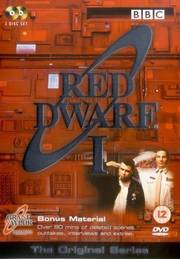
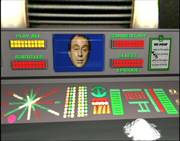
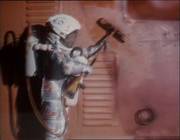

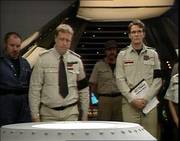
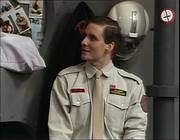
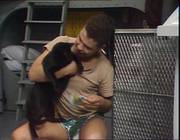
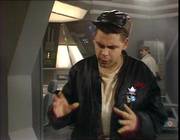
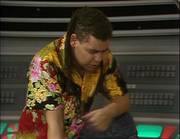

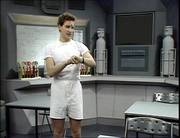
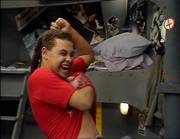

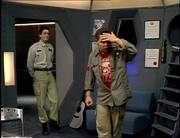
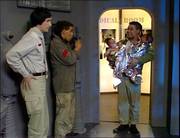

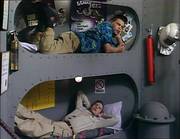
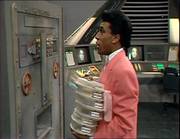
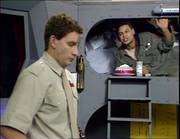
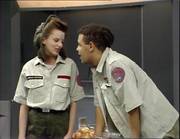
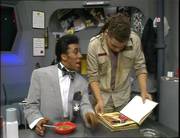
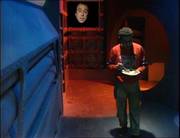
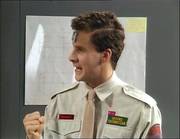
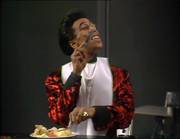
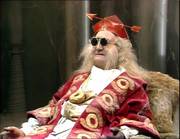
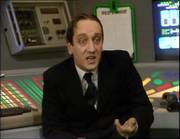
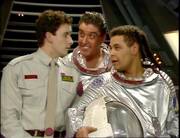
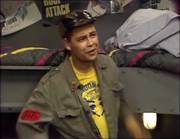
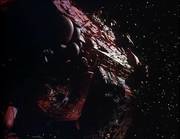
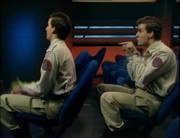
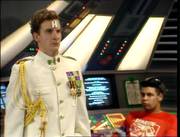










































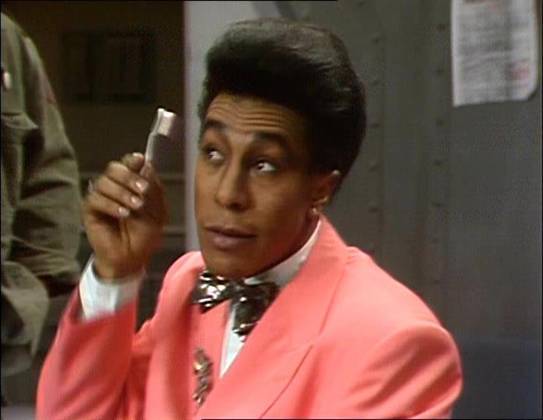









Your Opinions and Comments
Be the first to post a comment!